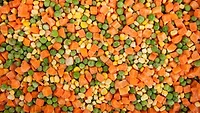JERMA Suggests STEC Controls for Meat and Dairy

The Joint Food and Agriculture Organization of the United Nations (FAO) and World Health Organization (WHO) Expert Meeting on Microbiological Risk Assessment (JERMA) recently published an executive summary of its meeting on Shiga toxin-producing Escherichia coli (STEC) associated with meat and dairy products. The meeting was held to provide scientific advice on pre- and post-harvest control measures for STEC in animals and foods of animal origin.
STEC Control in Live Animals on Farms
To manage STEC in livestock on farms, JERMA proposes the use of approaches based on Good Agricultural Practices (GAPs) and Good Hygiene Practices (GHPs). Accepted GAPs and GHPs that are effective in reducing STEC include maintaining clean bedding, housing, and drinking water for animals; appropriate animal density and biosecurity measures; effective sanitation of facilities; and proper disposal of manure.
JERMA assessed several dietary and herding methods for controlling STEC in cattle. One recommended approach is the use of probiotics, as well as colicins or sodium chlorate, in feed. JERMA also suggests that the stress of long-distance transport can increase the fecal excretion of STEC in cattle, and therefore warns against transporting cattle for slaughter. JERMA also supports the use of certain vaccines to reduce the fecal excretion of STEC, but acknowledges that the cost of such vaccines may be a barrier to use. JERMA does not recommend the use of antimicrobials in cattle feed to reduce STEC prevalence.
JERMA suggests that the STEC control measures that are effective for cattle are also effective for small ruminants, such as goats and sheep. No interventions for the control of STEC in live pigs was evaluated.
STEC Control in Meat Processing Facilities
Processing measures for the control of STEC that JERMA promotes with medium to high levels of confidence include steam vacuuming of visible fecal contamination on carcasses, use of a hot potable water carcass wash, steam pasteurization followed by 24 hours of air chilling, the use of knife trimming to remove carcass tissue contaminated with fecal material, and antimicrobial dips of primals and trims. Additionally, high-pressure processing (HPP), gamma irradiation, and electron beam sterilization may provide significant reductions of STEC in ground beef and retail packs.
Looking for quick answers on food safety topics?
Try Ask FSM, our new smart AI search tool.
Ask FSM →
JERMA points to the use of hot water, lactic acid, and other organic acid sprays for controlling STEC in small ruminant meat processing. JERMA did not evaluate STEC controls for pork processing, but mentions that the interventions described in FAO’s and WHO’s report, “Interventions for the control of non-typhoidal Salmonella spp. in beef and pork,” may be effective against STEC.
STEC Control in Dairy
JERMA states that, as is the case for livestock rearing and meat processing, GHPs and GAPs are also crucial in controlling STEC in dairy, such as temperature control and hygiene during dairy harvesting and transportation. During processing, pasteurization is highly effective for controlling STEC. The use of bacteriophages, HPP, gamma irradiation, and electron beam sterilization are also possible control methods against STEC in dairy processing. Finally, active packaging and electron beam sterilization may be useful in the post-manufacturing stage.
STEC Monitoring and Detection
JERMA stresses the importance of sampling and testing meat and dairy for STEC. Since STEC is often present at low levels in foods, culture enrichment of food samples in critical. Polymerase chain reaction (PCR) testing methods are quick, low-cost, commercially available, and effective in detecting STEC. The isolation of STEC by culture-based methods or immunomagnetic separation can also be valuable in confirming PCR-positive results.









